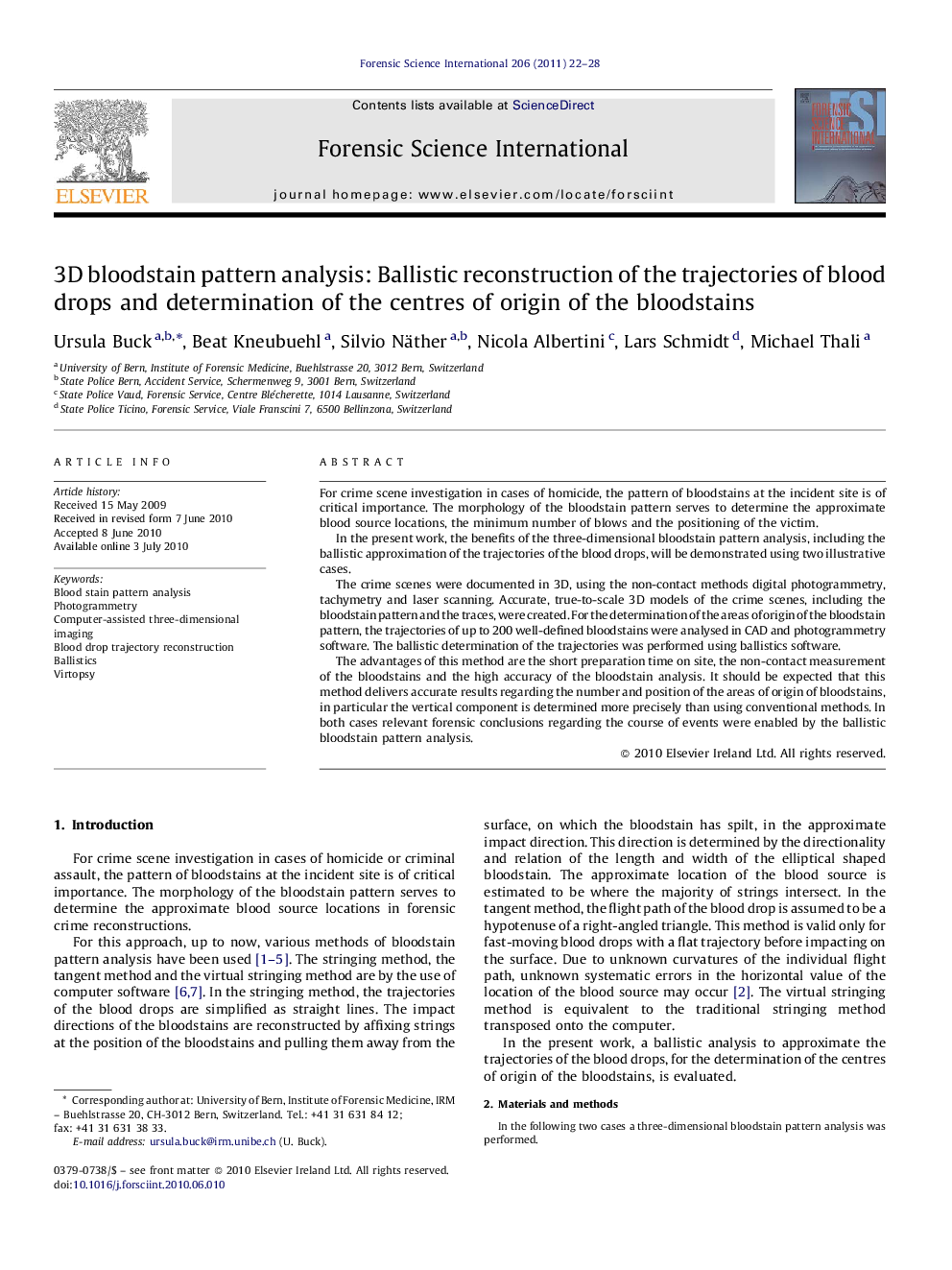| Article ID | Journal | Published Year | Pages | File Type |
|---|---|---|---|---|
| 96660 | Forensic Science International | 2011 | 7 Pages |
For crime scene investigation in cases of homicide, the pattern of bloodstains at the incident site is of critical importance. The morphology of the bloodstain pattern serves to determine the approximate blood source locations, the minimum number of blows and the positioning of the victim.In the present work, the benefits of the three-dimensional bloodstain pattern analysis, including the ballistic approximation of the trajectories of the blood drops, will be demonstrated using two illustrative cases.The crime scenes were documented in 3D, using the non-contact methods digital photogrammetry, tachymetry and laser scanning. Accurate, true-to-scale 3D models of the crime scenes, including the bloodstain pattern and the traces, were created. For the determination of the areas of origin of the bloodstain pattern, the trajectories of up to 200 well-defined bloodstains were analysed in CAD and photogrammetry software. The ballistic determination of the trajectories was performed using ballistics software.The advantages of this method are the short preparation time on site, the non-contact measurement of the bloodstains and the high accuracy of the bloodstain analysis. It should be expected that this method delivers accurate results regarding the number and position of the areas of origin of bloodstains, in particular the vertical component is determined more precisely than using conventional methods. In both cases relevant forensic conclusions regarding the course of events were enabled by the ballistic bloodstain pattern analysis.
